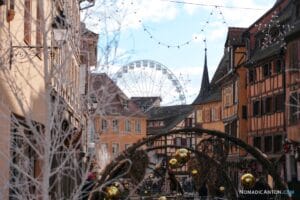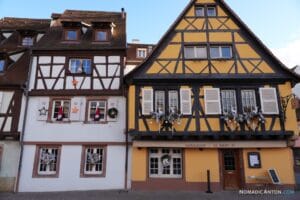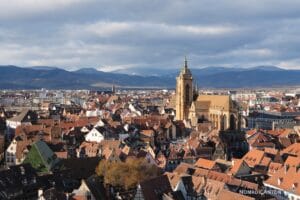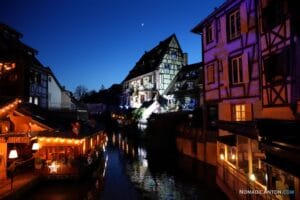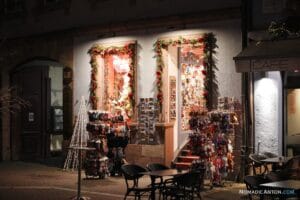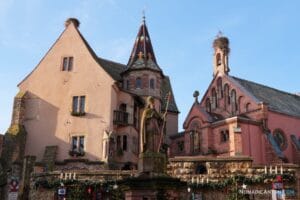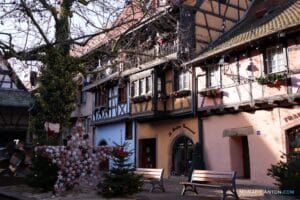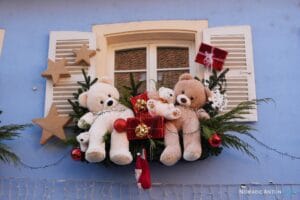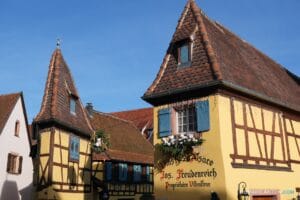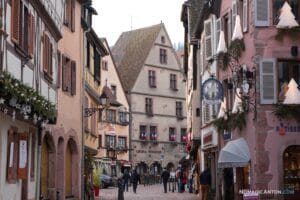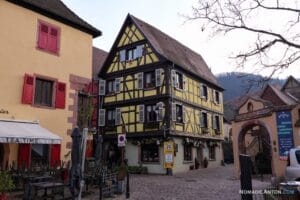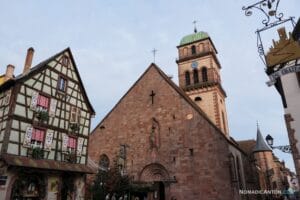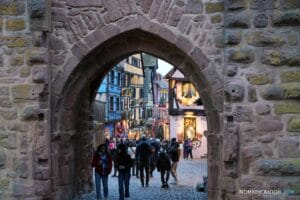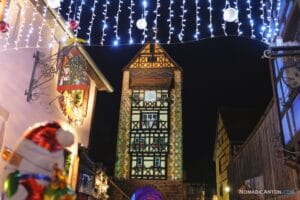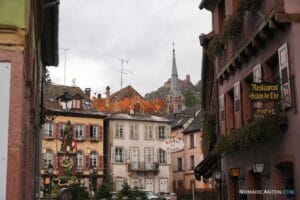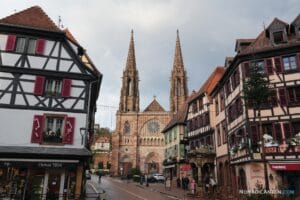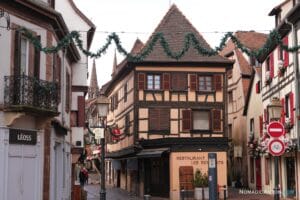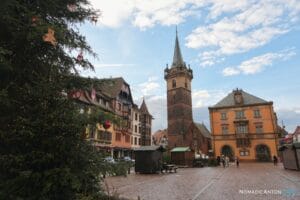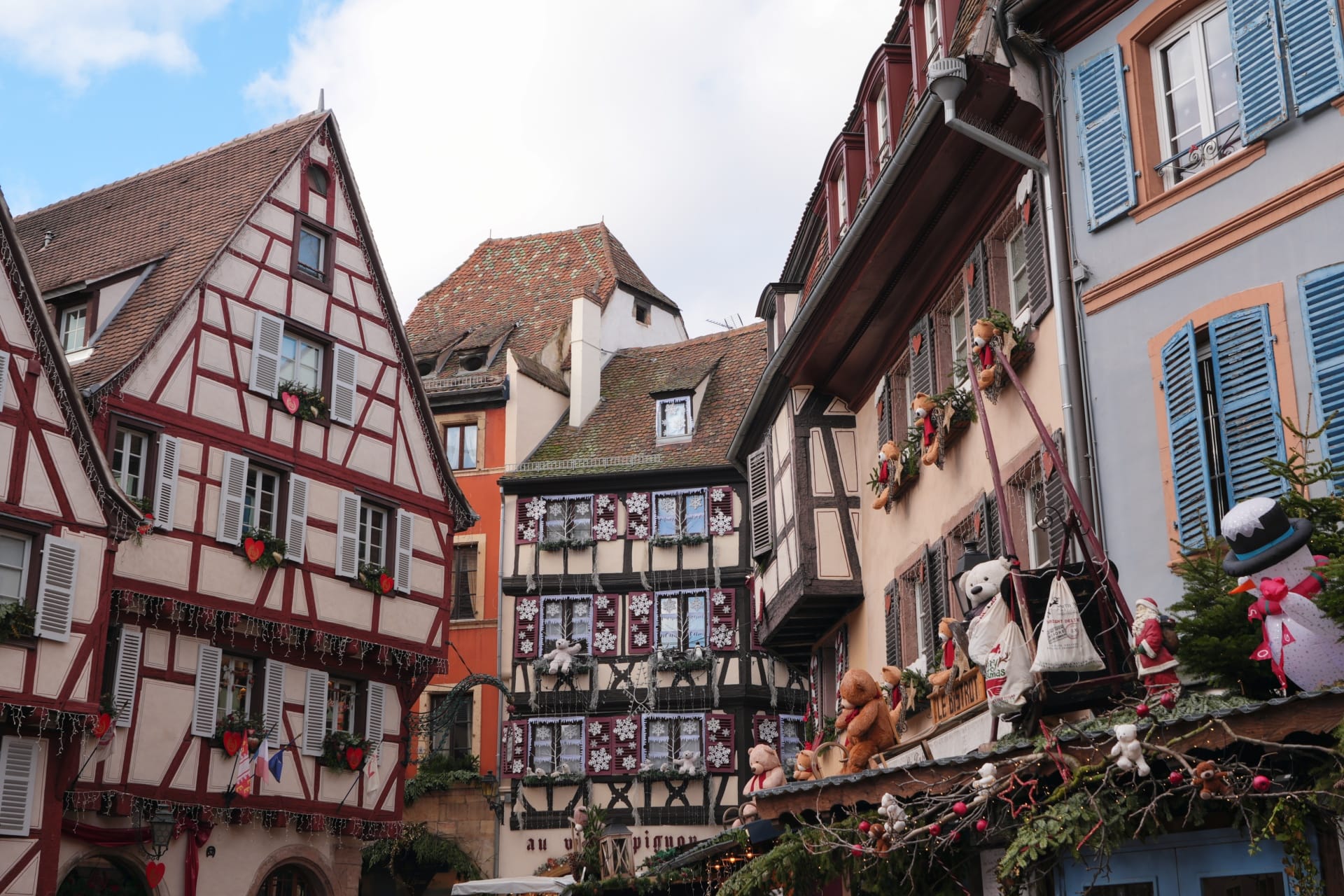
At the beginning of January, I traveled to Alsace, a picturesque region in eastern France. I took a direct high-speed train from Paris to Colmar, where my exploration began. Alsace is famous for its Christmas markets and festive charm, and although I missed the peak holiday season by a week, the region still held onto its Christmas magic. Twinkling lights, festive decorations, and remnants of Christmas markets created a cozy atmosphere, making it feel like the holidays weren’t entirely over.
To make the most of my trip and visit multiple towns efficiently, I rented a car at the Colmar train station, which I later dropped off in Strasbourg. This gave me the flexibility to explore at my own pace, especially in the quieter winter season when public transport options are more limited, and the weather is cold.
Nestled between the Vosges Mountains and the Rhine River, Alsace is a region where French and German influences intertwine seamlessly, creating a unique cultural identity. This fusion is evident in its distinctive architecture, featuring half-timbered houses painted in pastel colors, as well as its bilingual street signs and rich historical heritage. The region’s famous Route des Vins (Wine Route) winds through picturesque villages and rolling vineyards, showcasing some of France’s finest white wines.
The local cuisine is a combination of French flavors with a German twist. Traditional Alsatian dishes include choucroute garnie (sauerkraut with various meats), tarte flambée (a thin-crusted, pizza-like dish topped with crème fraîche, onions, and lardons), and baeckeoffe (a meat and potato casserole). The region is also famous for its unique white wines, particularly Riesling and Gewürztraminer, as well as its craft beer tradition.
Strasbourg, the regional capital, is the largest and most visited city in Alsace, but in this post, I’m focusing on the smaller towns and villages that make this region truly special. From medieval streets to vineyard-covered hills, these lesser-known gems offer an intimate and picturesque experience, especially in winter.
Often called “Little Venice”, Colmar is the most popular town (after Strasbourg) and embodies the essence of Alsatian charm with its well-preserved medieval old town. The town’s architecture is a stunning display of Gothic and Renaissance styles, with colorful half-timbered houses reflected in the peaceful canals of the Petite Venise quarter. During winter, the town had an almost fairy-tale-like vibe, especially with the snowfall I was fortunate enough to experience on my last night.
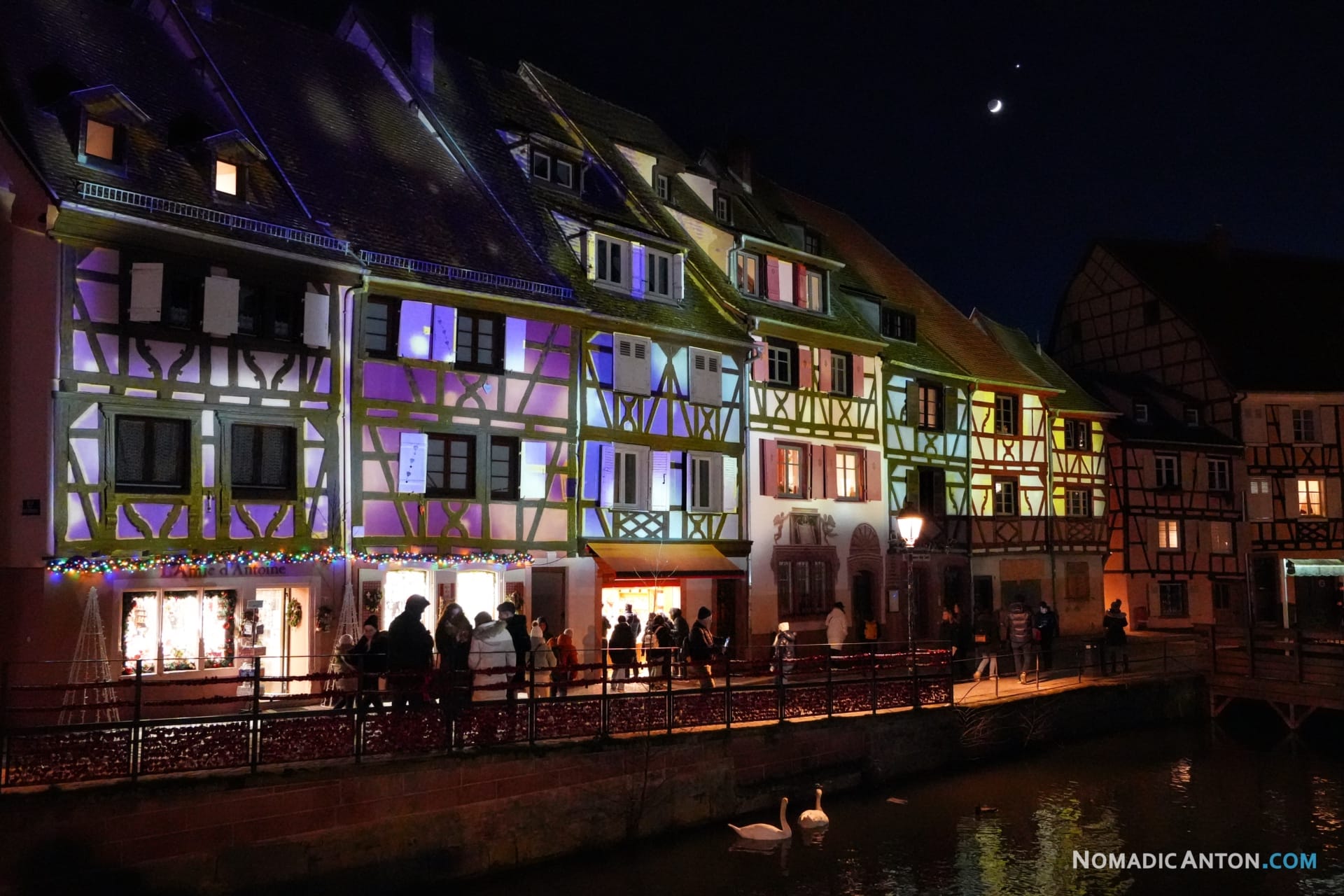
As I explored the remains of the Christmas market and strolled through the historic center, I discovered that Colmar was the hometown of Frédéric Auguste Bartholdi, the sculptor of the Statue of Liberty. The Unterlinden Museum, housed in a 13th-century Dominican convent, showcases the famous Isenheim Altarpiece, though the winter atmosphere drew me more to wandering outdoors through the atmospheric streets and along the canal.
Designated as one of the “Most Beautiful Villages in France”, Eguisheim’s circular layout follows its medieval walls in concentric streets. During my early afternoon visit, the village was peacefully quiet, allowing me to fully appreciate its architectural details and historic charm. The octagonal central square, with its ancient castle and St. León IX fountain, served as a reminder that this was the birthplace of Pope Leo IX.
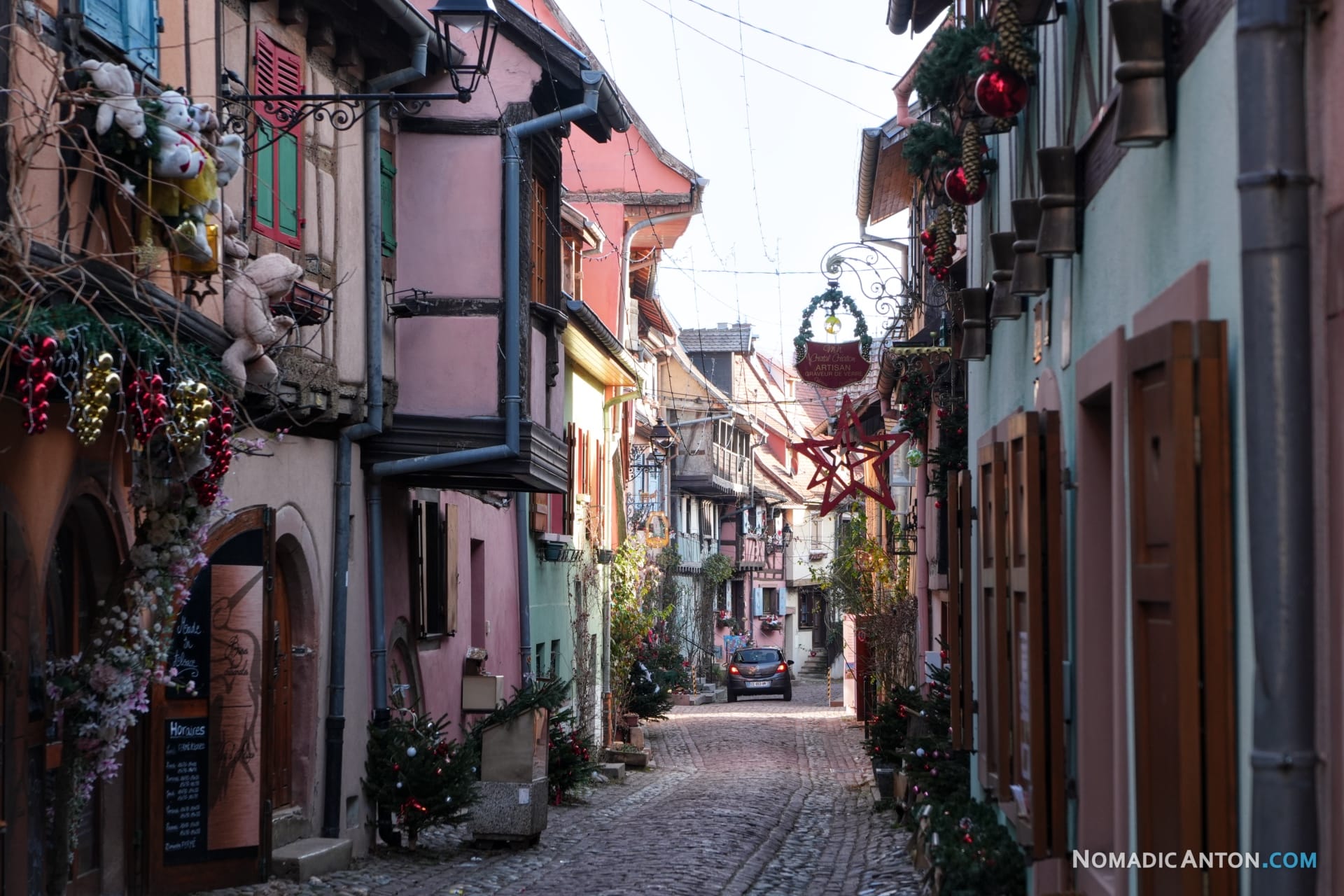
The village’s famous colorful houses, adorned with winter decorations, created perfect photo opportunities against the backdrop of dormant vineyards and mountains. The tranquility of the off-season allowed me to explore the narrow streets at my own pace, appreciating details like traditional Alsatian windows decorated with winter flower arrangements and building facades that have remained largely unchanged for centuries.
Nestled between vine-covered hills, Kaysersberg (which means “Emperor’s Mountain”) was one of my favorite stops on this trip. The town’s scenic location, with a small mountain river flowing through it, makes it especially beautiful.
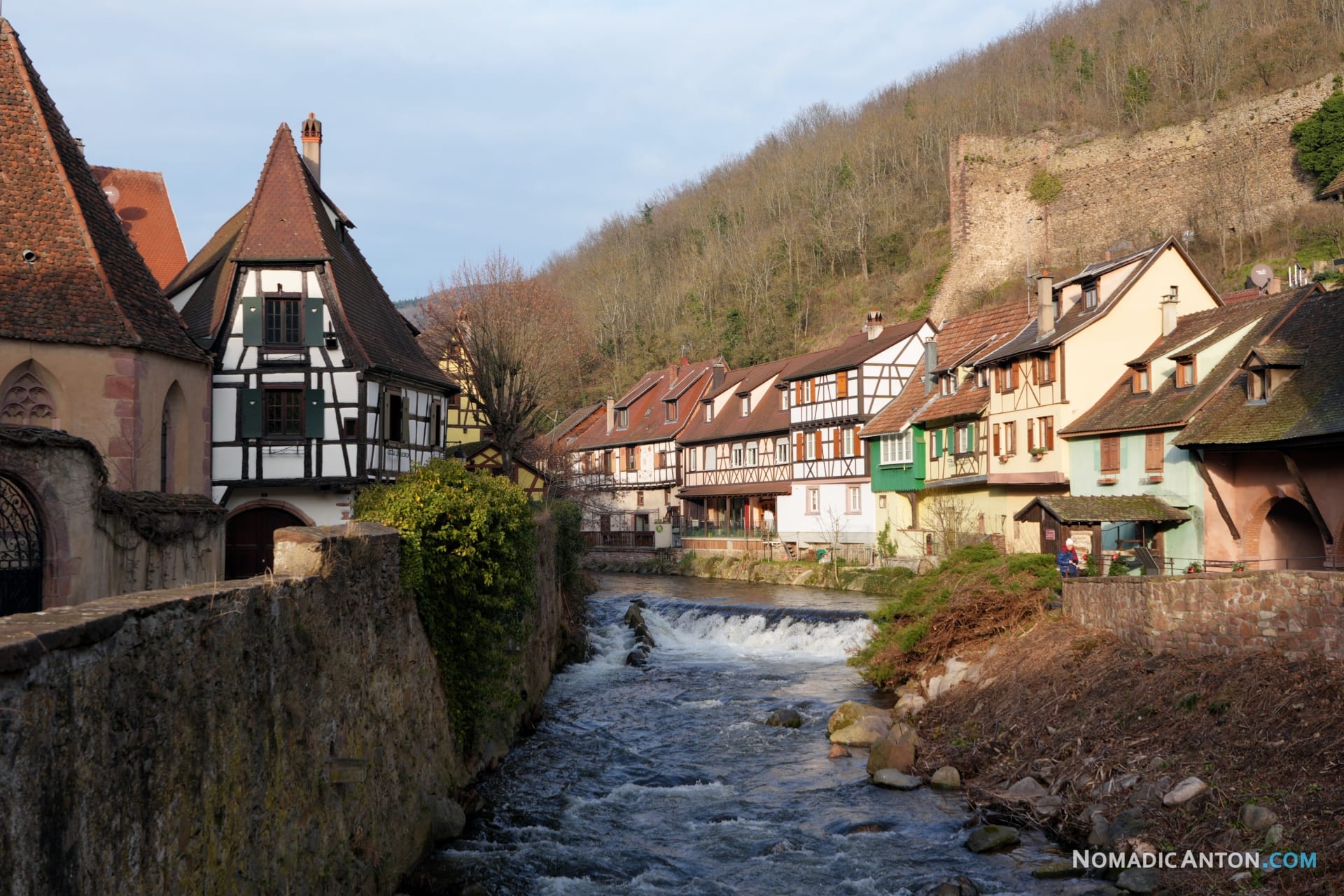
The town’s setting is particularly dramatic in winter, with the medieval stone bridge offering perfect views of the traditional houses along the river. The hometown of Albert Schweitzer, Kaysersberg maintains its authentic charm with fortified walls, a beautiful 16th-century fortified bridge, and winding streets lined with artisanal shops and traditional winstubs (wine rooms).
Known as “The Gem of the Alsace Vineyards”, Riquewihr seems frozen in time, looking much as it did in the 16th century. The town’s position on the Wine Route makes it a natural stop for wine enthusiasts, and even in winter, several wine cellars are still open for tastings. I took advantage of the late afternoon to go up into the surrounding vineyards, where I was rewarded with a spectacular view over the medieval town and the Rhine Valley at sunset.
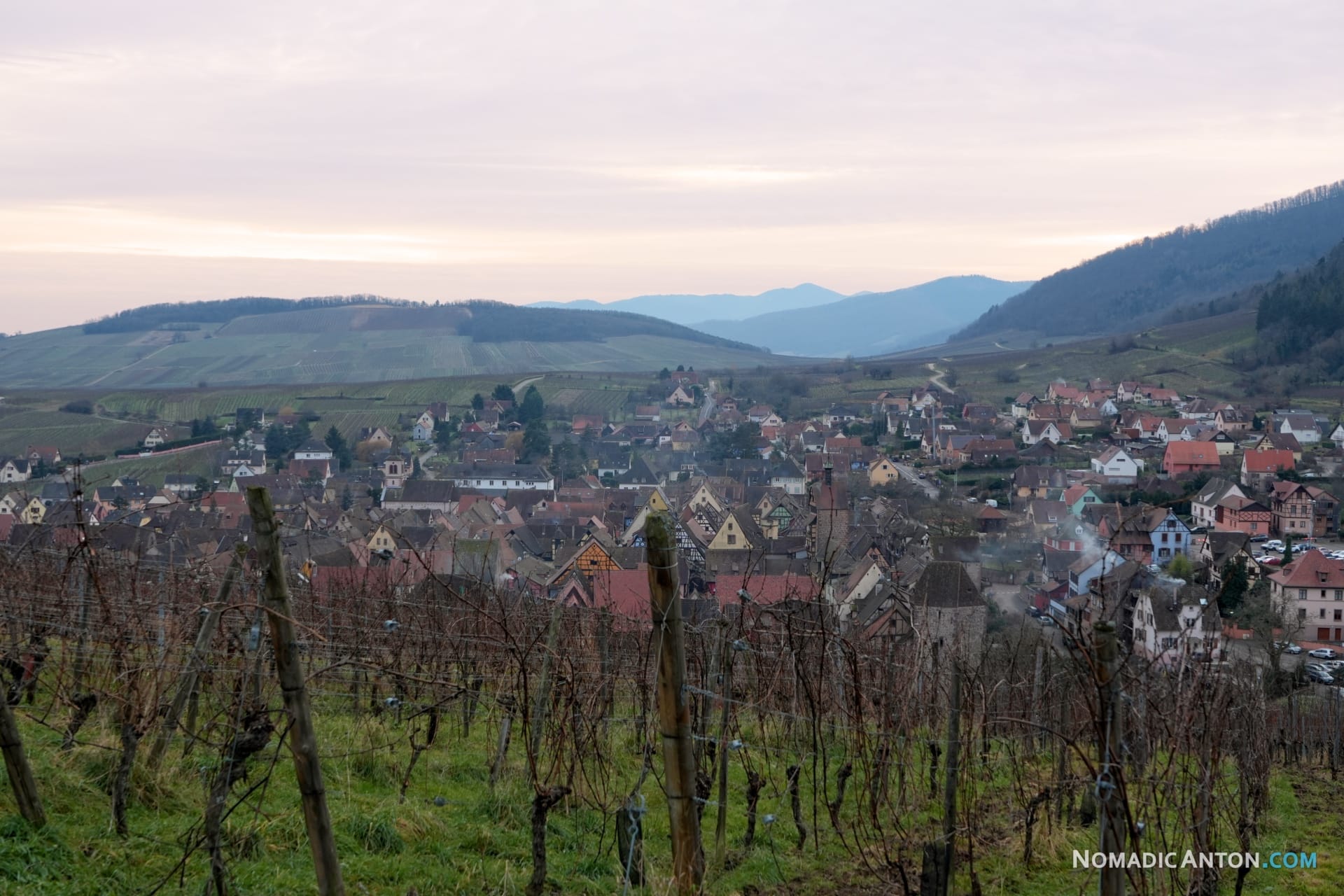
The Dolder, the town’s 13th-century defensive gate, stands as an impressive entrance to the historic center. The winter light created beautiful shadows on the ancient walls and highlighted the architectural details of the famous high houses, built narrow and tall to maximize space within the city walls.
Upon my arrival in Ribeauvillé, I found the roads covered in ice after a nighttime snowfall that had partly melted and refrozen. This medieval town, surrounded by the ruins of three castles, has been a wine-growing center since the Middle Ages. The main street, Grand’Rue, is lined with magnificent old houses, their colorful facades competing for attention with ornate signs hanging overhead.
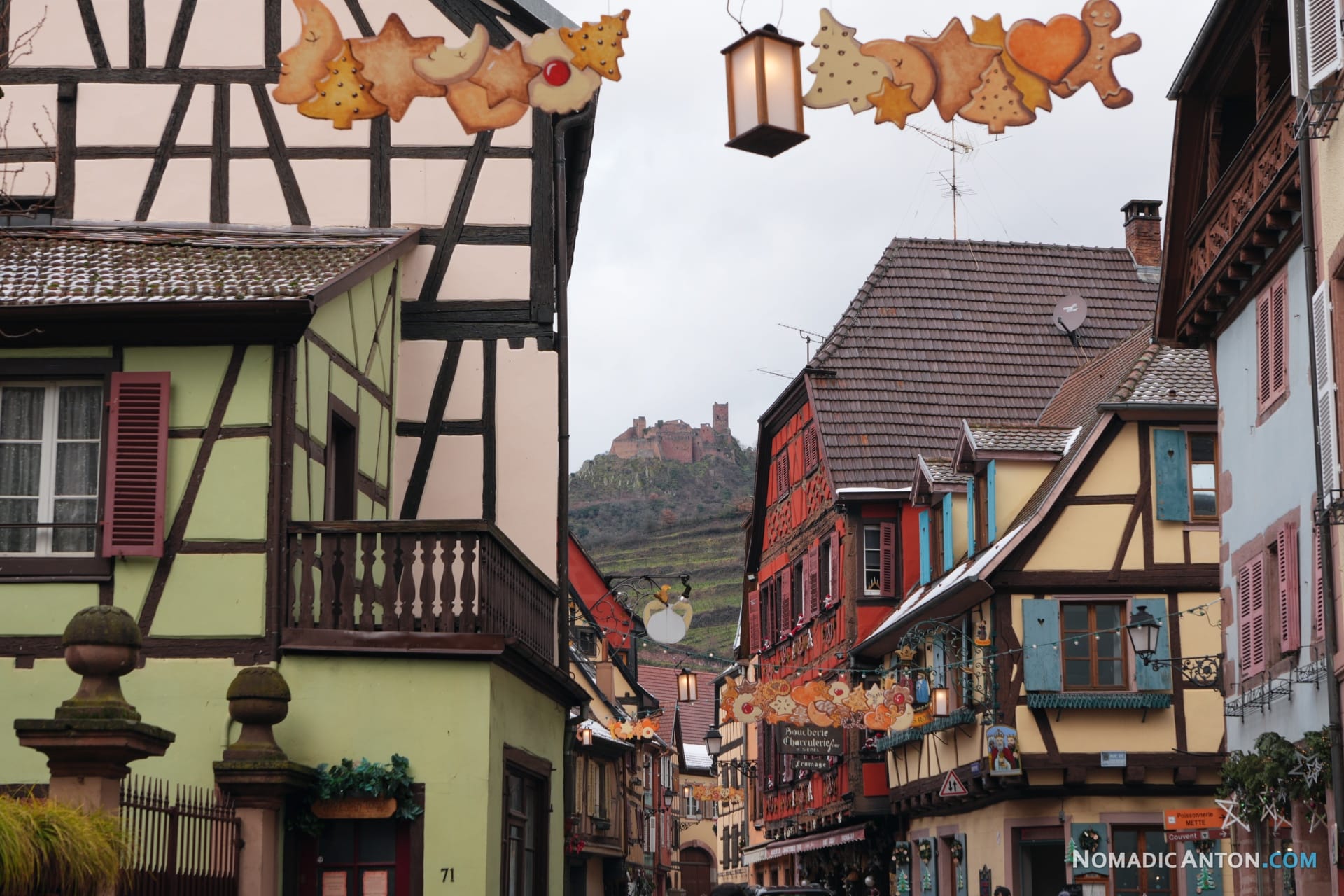
The town’s rich history as the seat of the Lords of Ribeaupierre is evident in its grand Renaissance fountains and elegant townhouses. Even in winter, the charm of local traditions persists, with the town’s famous wine-growers’ brotherhoods maintaining centuries-old customs. From here, you can see the three castles – Saint-Ulrich, Girsberg, and Haut-Ribeaupierre.
As the final stop on my Alsatian journey before heading to Strasbourg, Obernai proved to be a fitting finale. The town is considered one of the finest embodiments of Alsatian architecture and culture, with its central market square (Place du Marché) surrounded by remarkable buildings, including the 60-meter-high Kappelturm (Chapel Tower) and the Renaissance-style Town Hall.
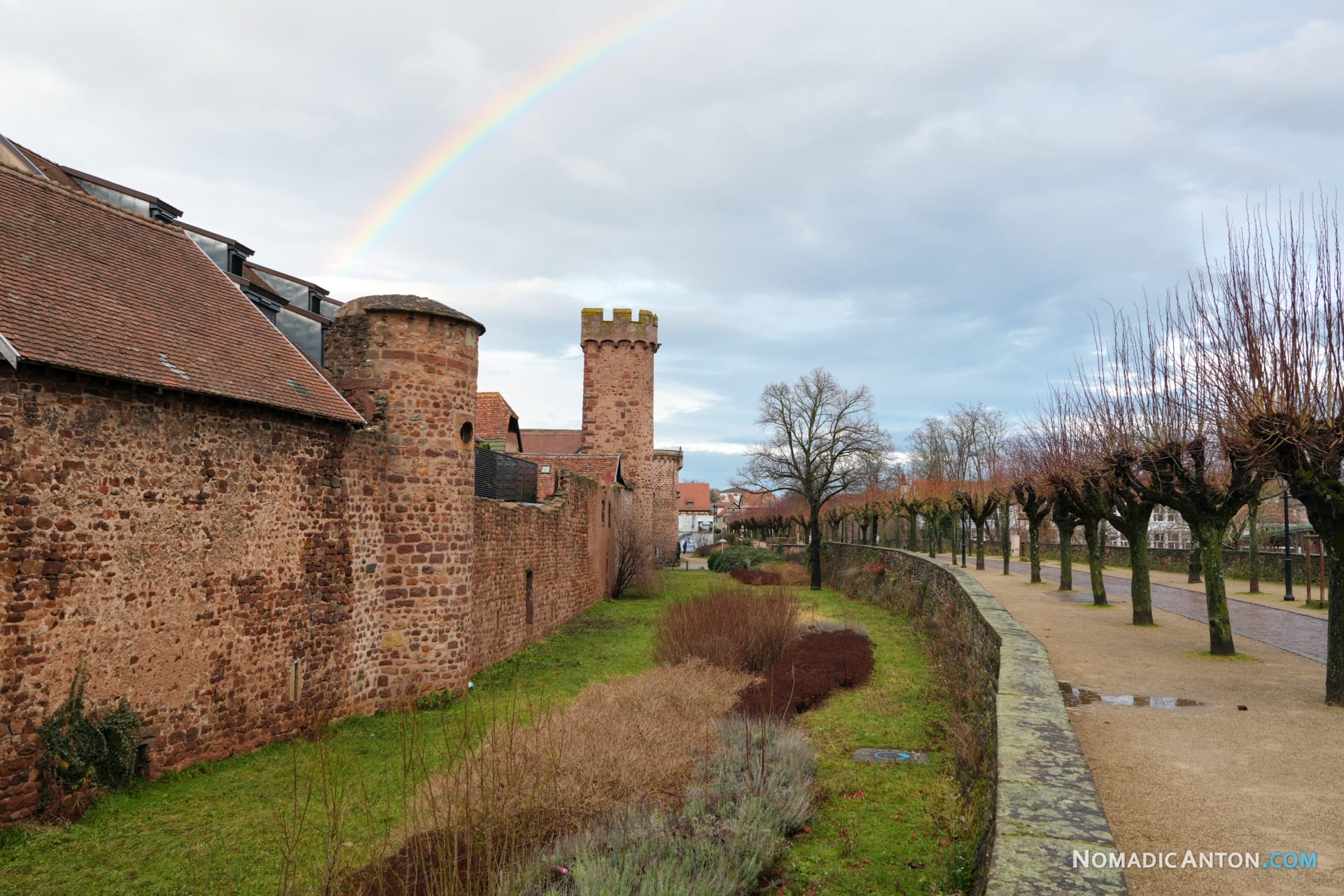
Walking through Obernai’s historic center, I admired the town’s ramparts and towers, well-preserved remnants of its medieval fortifications. The Sainte-Odile Fountain and the Corn Market building serve as reminders of the town’s historical importance as a prosperous trading center.
Visiting Alsace in winter, just after the Christmas rush, turned out to be a great decision. The region still held onto its festive charm but with fewer crowds and a peaceful atmosphere that allowed me to truly appreciate the medieval architecture and authentic local life. Driving through these historic towns and villages, seeing them in a quieter season, and enjoying the last remnants of Christmas decorations made the trip even more special.
If you’re looking for a winter getaway that combines fairytale landscapes, rich history, and amazing food, Alsace should be on your list – even after the Christmas markets have closed.
